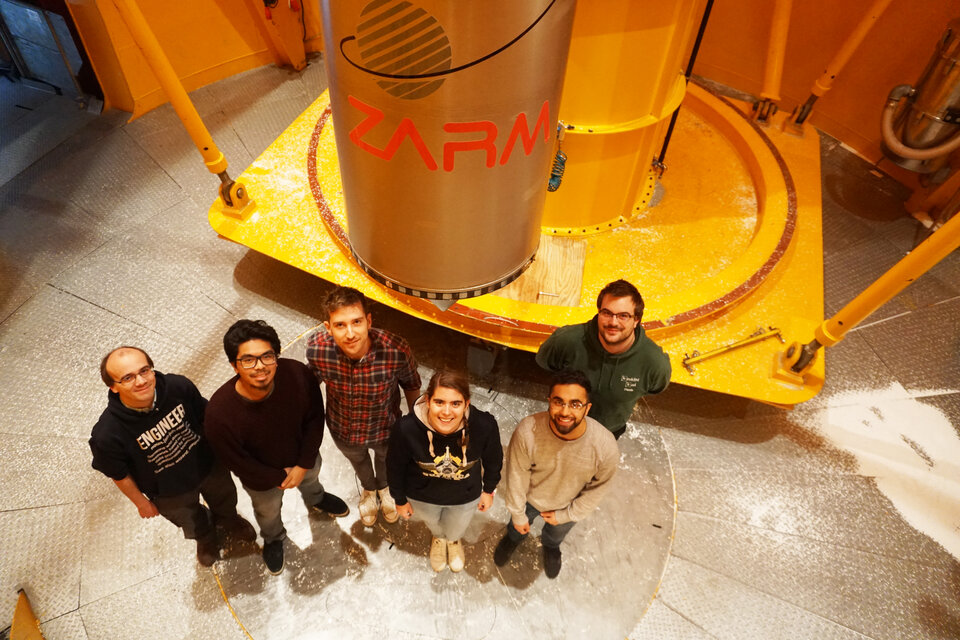Students simulate a satellite landing on asteroids in ZARM’s Drop Tower
A team of 6 students from Cranfield University spent two weeks in Bremen’s Drop Tower at ZARM and completed a set of 5 experiments, simulating gently landing a CubeSat on a C type asteroid.
Asteroids, also known as minor planets and planetoids composed of mineral and rock, orbit the Sun and are remnants of the formation of our Solar System. As such, asteroids tell us something about the history of the solar system and have been an important subject for science for many years.
To investigate asteroids, asteroid orbiters are the most efficient platform as they allow a long period of observation and characterization and eventually enable an asteroid landing for direct sampling. However, landing on an asteroid comes with completely different challenges compared to landing on bodies that have high gravitational force, such as those of Mars and the Moon: unless sufficient energy is dampened, the lander may bounce permanently off the asteroid.
In order to prevent this inconvenience, it is necessary to understand how much energy will be absorbed and released by the asteroid when the lander or spacecraft touches the surface. The students from Cranfield University therefore proposed to simulate the landing of a 3U CubeSat on an asteroid to the ESA Academy's Drop Your Thesis! 2018 Programme. For the team, the low gravity conditions of the Drop Tower in Bremen, Germany, are perfect as it resembles the gravity conditions surrounding the asteroids.

ZARM’s Drop Tower, 146m high and filled with control rooms, laboratories and hardware workshops, houses a steel tube of 120m high from which air can be evacuated. Within this steel tube, a capsule can be either dropped or launched with a catapult mode. In the drop mode, the capsule is released from the top of the tube, giving 4.74s of microgravity (10-6g) experiment time. In the catapult mode, the capsule is catapulted vertically to the top of the tower after which it falls back down in the deceleration chamber, giving 9.3s of microgravity.
As the capsule doesn’t provide the space for a 3U CubeSat, the students chose to simulate a 3U with a 1U CubeSat (10x10x10cm). This shoe-box sized spacecraft carries the benefits of low-cost and usability in high-risk operations, such as landing on the highly-perturbed, uncertain and dynamical environment of a small-asteroid. The students chose to only use the drop mode, as in the catapult mode the capsule and its enclosed experiment experience an upward acceleration of up to 35g before the experiment starts, which in this case could seriously damage the experiment.
As for any scientific experiment, unexpected phenomena and failing systems troubled the team. Due to miniscule forces imparting momentum on the simulated asteroid surface, the team was forced to make some last-minute changes to the set up. Luckily, their experiment functioned properly during the last two drops and the team will be able to continue their study based on this data.
If you’re interested in the progression and results of Team Land3U, keep an eye on their webpage and Facebook page.


Access the video


